Samsung Galaxy Book3 Pro 14-inch (left), Apple 14-inch MacBook Pro (right)
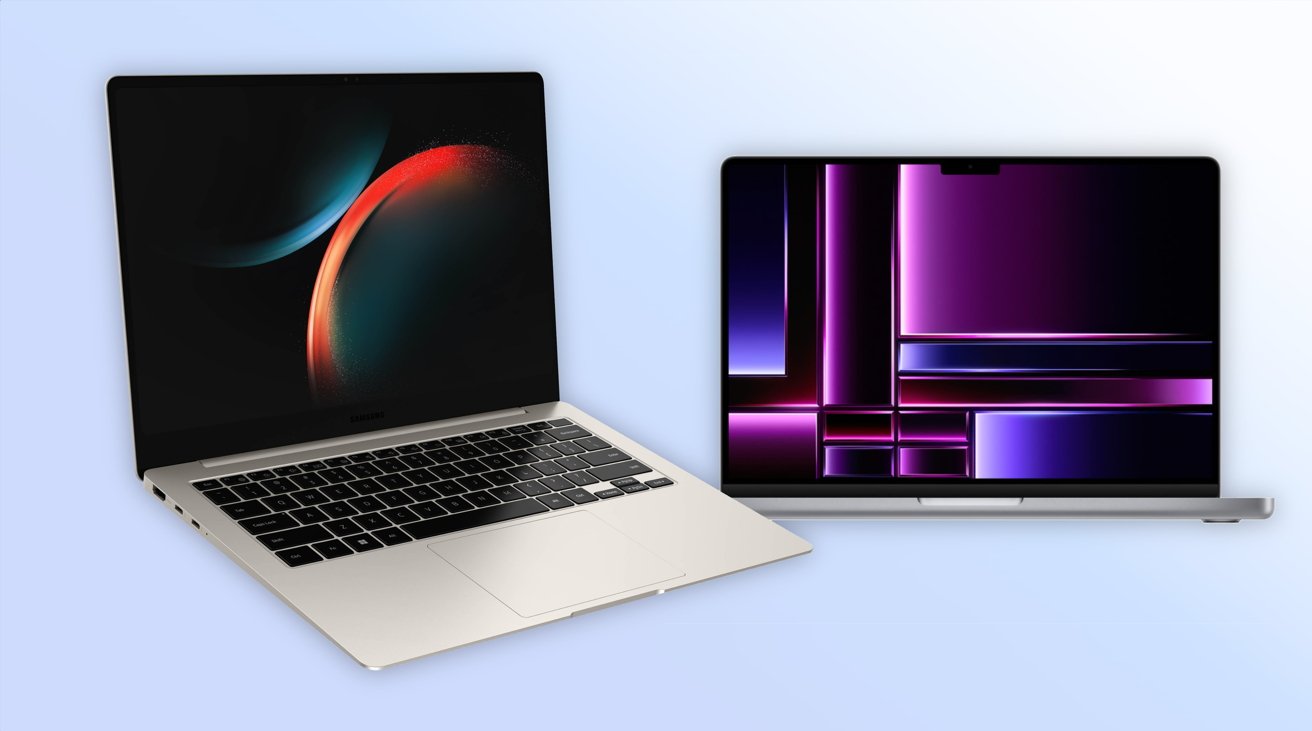
AppleInsider may earn an affiliate commission on purchases made through links on our site.
Samsung's February notebook launches include the Galaxy Book3 Pro 14, featuring a Dynamic AMOLED display and a 13th-gen Intel processor. This is how it stacks up against Apple's counterpart, the new M2-based 14-inch MacBook Pro.
The Samsung Unpacked event largely focused on smartphones, but it also incorporated the South Korean tech giant's Galaxy Book3 lineup in the proceedings.
One of the collection that made it to the event is the Galaxy Book3 Pro, a high-end notebook that puts together quite a few impressive features, including a high-quality display and a fast chip. All held in a thin and stylish notebook casing that doesn't look a million miles away from the 14-inch MacBook Pro's established aesthetic.
Exclusive Deals Through AppleInsider
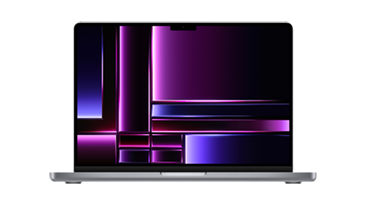
14-inch MacBook Pro (2023)
Save on every configuration with exclusive coupon savings.
Buy from $1,849
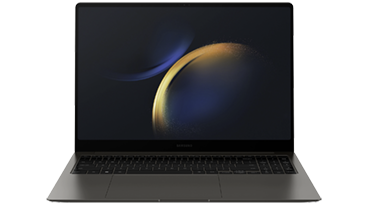
Samsung Galaxy Book 3 Pro
Get a free storage upgrade on the Galaxy Book 3 Pro for a limited time.
Buy from $1,149.99
With the two relatively recent launches between the bitter electronics rivals, there's no better way to compare Samsung's 14-inch Galaxy Book3 Pro than against Apple's own 14-inch Pro notebook.
Galaxy Book3 Pro 14 vs 14-inch MacBook Pro - Specifications
| Specifications | Samsung Galaxy Book3 Pro 14-inch (2023) | Apple 14-inch MacBook Pro (2023) |
|---|---|---|
| Price (starting) | $1,149.99 Check Galaxy Book prices | $1,999.00 Best 14-inch MacBook Pro prices |
| Display size (inches) | 14 | 14.2 |
| Dimensions (inches) | 0.44 x 12.29 x 8.81 | 0.61 x 12.31 x 8.71 |
| Weight (pounds) | 2.58 | 3.5, 3.6 (M2 Max) |
| Max Resolution | 2,880 x 1,800 | 3024 x 1964 |
| Pixel Density | 242 | 254 |
| Brightness | HDR: 500 nits peak, 400 nits max | XDR: 1000 nits sustained, 1600 nits peak SDR: 500 nits max |
| Display Lighting | Dynamic AMOLED 2X | Mini LED |
| Display Technology | Adaptive 120Hz, | Wide Color P3, True Tone, ProMotion |
| Processors | Intel 13th-gen Core i5-1340P Intel 13th-gen Core i7-1360P | Up to M2 Pro 12-core, M2 Max 12-core |
| Graphics | Intel Iris Xe Graphics | Up to 19-core GPU (M2 Pro) Up to 38-core GPU (M2 Max) |
| Memory | 8GB, 16GB, 32GB | 16GB, 32GB, 64GB (M2 Max), 96GB (M2 Max) |
| Storage | 256GB, 512GB, 1TB | 512GB, 1TB, 2TB, 4TB, 8TB |
| Battery | 63Wh | 70Wh, Up to 18 hours |
| Biometrics | Fingerprint on Power Key | Touch ID |
| Trackpad | Yes | Force Touch |
| Keyboard | Island Type Backlit | Backlit Magic Keyboard with ambient light sensor |
| Ports | Two Thunderbolt 4, One USB Type-A HDMI 1.4 MicroSD card slot 3.5mm headphone jack | Three Thunderbolt 4/USB 4 (USB-C) Advanced HDMI port SDXC card slot 3.5mm headphone jack |
| Webcam | FHD 1080p | 1080p FaceTime HD |
| Audio | AKG Quad-Speaker 2x 5W Woofer 2x 2W Tweeter Smart Amp Dolby Atmos Studio-quality Dual Mic | High-fidelity six-speaker sound with force-cancelling woofers Spatial Audio Dolby Atmos Three mic array |
| Connectivity | Wi-Fi 6E, Bluetooth 5.1 | Wi-Fi 6E, Bluetooth 5.3 |
| Charger | 65W USB-C | Starts at 67W USB-C |
Galaxy Book3 Pro 14 vs 14-inch MacBook Pro - Physical Features
The two notebooks are quite similar in their core specifications, namely that they're both thin and light notebooks with a fairly similar look and layout.
Both are made with an aluminum frame, giving a premium look as well as ensuring strength despite the thin construction of each.
There is a similarity in appearance for the display, with Samsung using similarly thin bezels, albeit without using Apple's notch design.
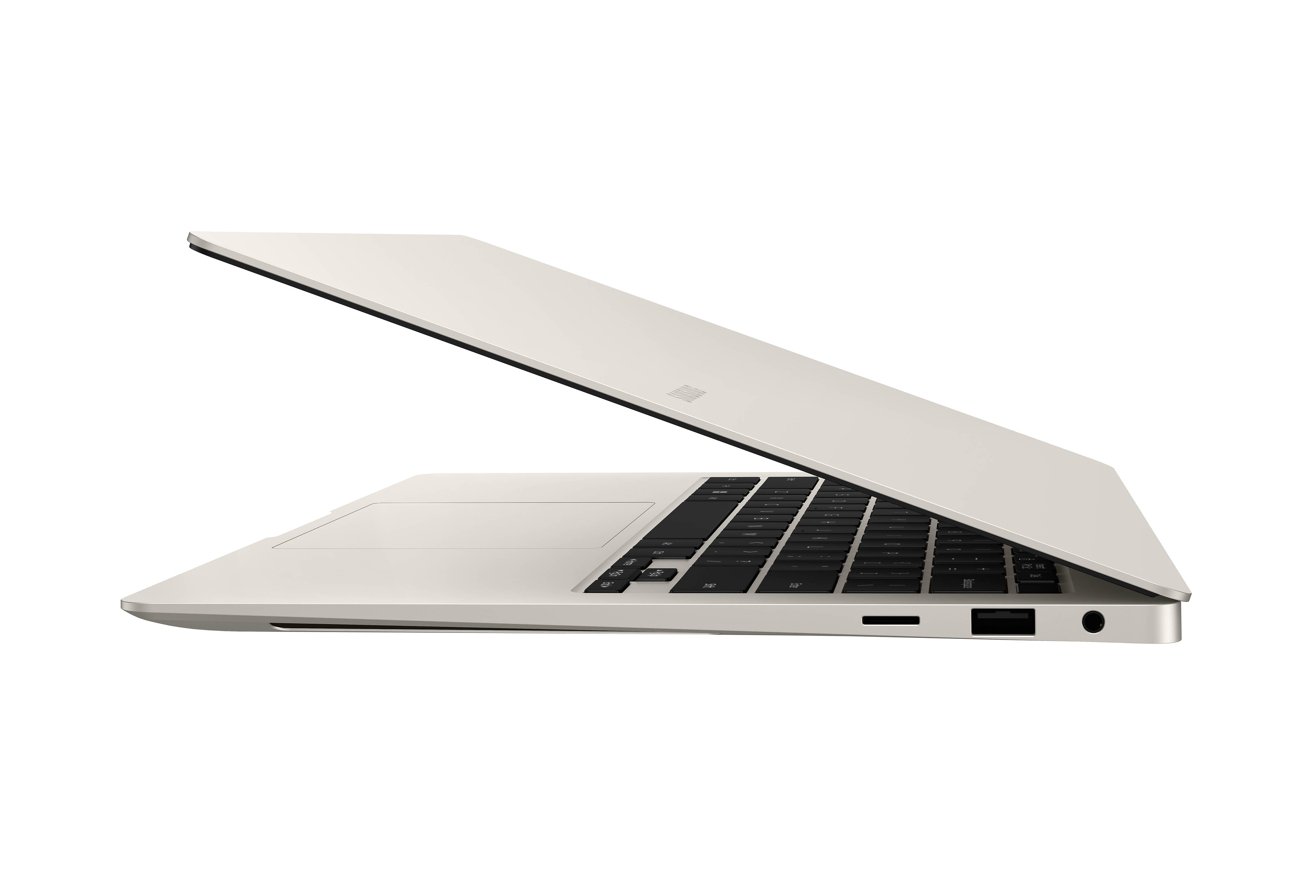
At 12.29 inches long and 8.81 inches wide, the Galaxy Book3 Pro has a marginally larger footprint than the 14-inch MacBook Pro, which is 12.31 inches long and 8.71 inches wide. Samsung's notebook is also thinner at 0.44 inches to Apple's 0.61.
On the weight side, the 14-inch MacBook Pro is practically a pound heavier at 3.5 pounds for the M2 Pro variant, 3.6 pounds for the M2 Max. Samsung made its notebook 2.58 pounds in weight, making it a little lighter to cart around.
They also boast green credentials, albeit in different ways. Apple uses 100 percent recycled aluminum in its enclosure, as well as recycled rare earth elements in all of its magnets.
Samsung's effort isn't quite as far along as Apple's, but it does use recycled plastics derived from "ocean-bound discarded fishing nets and water barrels."
Galaxy Book3 Pro 14 vs 14-inch MacBook Pro - Display
A big element of Samsung's notebook is its display, which the company mentions it is a 14-inch Dynamic AMOLED 2X panel.
That 16:10 screen has an adaptive 120Hz refresh rate, going between 48Hz and 120Hz, and a 3K resolution at 2,880 by 1,800 pixels. That gives it a pixel density of 242 pixels per inch.
Apple's continuing to use its Liquid Retina XDR Display, with its 14.2-inch screen having a resolution of 3,024 by 1,964 pixels, and a higher pixel density of 242ppi. Its ProMotion technology also does the adaptive refresh rate thing, also up to 120Hz.
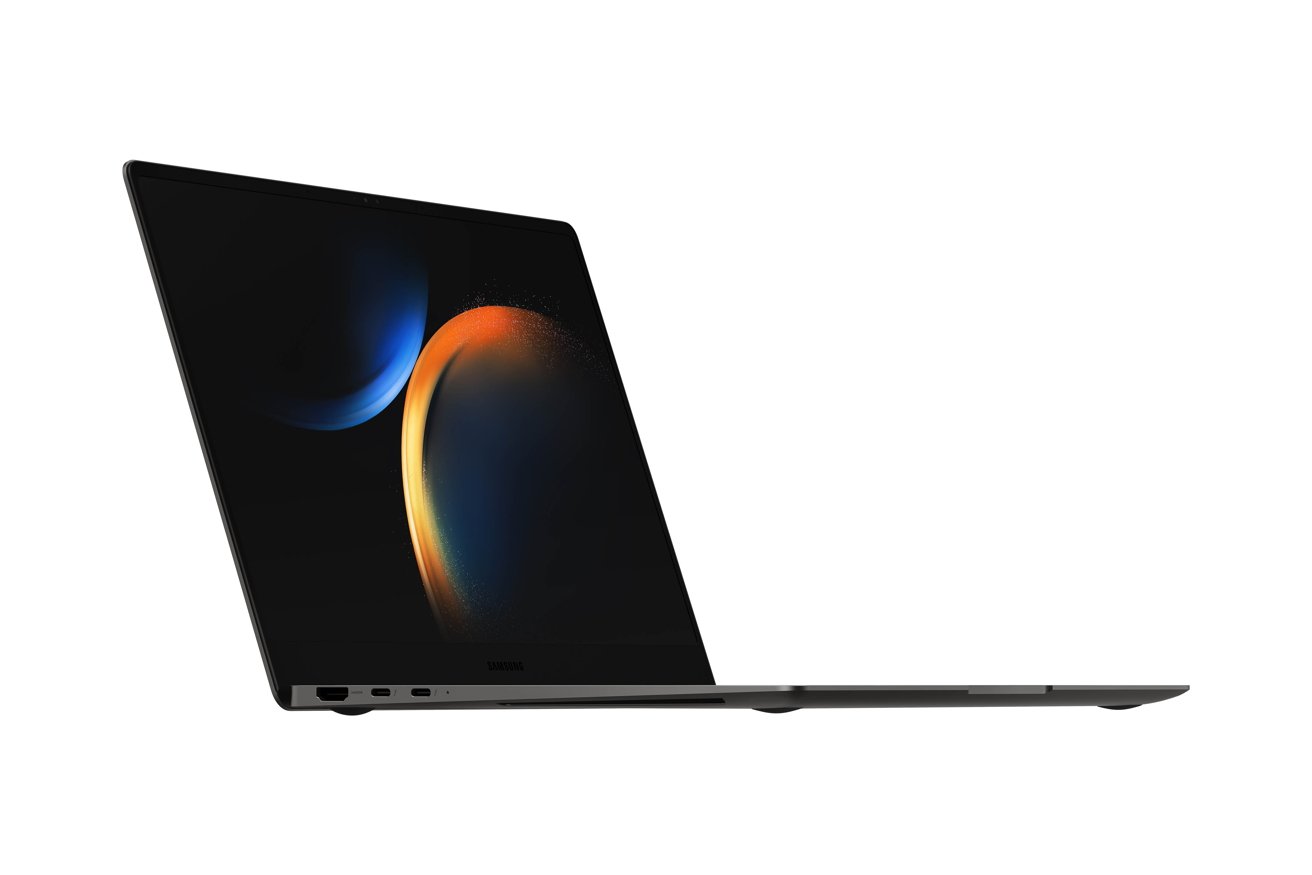
On the brightness side, Apple still has the lead with an SDR brightness of 500 nits, 1,000 nits of sustained full-screen XDR brightness, and 1,600 nits of peak brightness for HDR content. This is driven by Apple's use of mini LED backlighting, which also helps the screen manage a contrast ratio of 1 million to 1.
Samsung's screen goes up to 500 nits for HDR content at its peak, with 400 nits for typical maximum brightness. As an AMOLED display with self-illuminating pixels, you would've expected more brightness, but oddly it's not evident here.
There's good color representation across the board, with Apple supporting Wide Color P3 while Samsung claims to have 120% color volume of DCI-P3.
Galaxy Book3 Pro 14 vs 14-inch MacBook Pro - Processing and Graphics
The M2 Pro starts with a 10-core CPU, using 6 performance cores and four efficiency cores, as well as a 16-core GPU. There's a second variant M2 Pro, which has a 12-core CPU with 8 performance cores and four efficiency cores, and a 19-core GPU.
It also has a Media Engine, a hardware-accelerated system for encoding and decoding video in H.264, HEVC, ProRes, and ProRes RAW, which is great for video producers.
There's also Apple's Neural Engine, the machine learning element of the chip that powers features like Siri and computational imaging systems. Then there's the Unified Memory, which not only pools memory to be used by all chip elements, but also does so with 200GB/s of memory bandwidth.
The M2 Max follows the same structure as the 12-core M2 Pro, except it also has a 30-core GPU, double the Media Engine capacity, and a 30-core GPU. The top-end M2 Max has the same specs as the lower one, but with a 38-core GPU.
Samsung's chip choices fall into just two options, but both are 13th-gen Intel chips.
The Core i5-1340P is a 12-core chip with 4 performance and 8 efficiency cores, 16 total threads, and efficiency and performance core maximum turbo frequencies of 3.4GHz and 4.6GHz respectively.
The Core i7-1360P has the same core and thread counts, with efficiency and performance core max turbo frequencies of 3.7GHz and 5GHz.
Like the M2 Pro and Max, Samsung's selected chips are also using integrated graphics, under the Intel Iris Xe Graphics banner. That's a GPU with a maximum dynamic frequency of 1.45GHz or 1.5GHz depending on the chip, and either 80 or 96 execution units.
When it comes to benchmarking, there are no definitive benchmarks for any of the models or variants available via Geekbench, but we can find some result analogs to work with.

For Apple's M2 Pro, we can use a 2023 Mac mini with the 12-core CPU, which we know has a single-core score of 1,915 and multi-core of 14,507. For the M2 Max, initial benchmarks claimed to use the chip put the single-core result at 2,027 and multi-core at 14,888.
The Intel chips do appear in Geekbench's browser under Samsung notebooks, which we can again use as a guideline for general performance. Given the variance in results, we erred towards the upper end to give Samsung the benefit of the doubt.
The Core i5-1340P is reported as scoring around 1,630 for the single-core and 9,119 for multi-core, far behind the rest of the field.
The Core i7-1360P doesn't do much better, as while the single-core test nips at the M2 Pro's heels with 1,892, it's still far away at 9,885 for the multi-core.
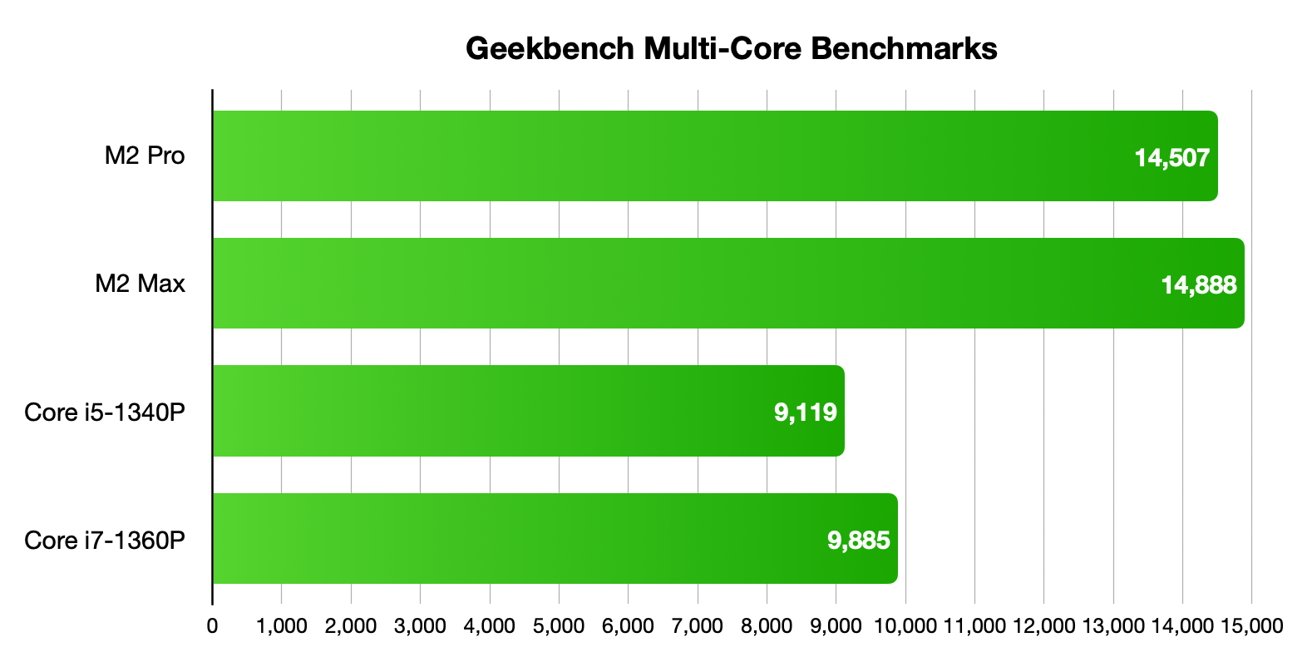
We would try to do a comparison of the GPU, except that Geekbench's browser isn't geared up for Iris Xe Graphics variants like this.
However, given the M1 Pro's GPU exceeds 39,000 under the Metal benchmark, and the highest Intel Iris result on the list doesn't quite hit 9,000, it's not a good sign for Samsung.
When proper benchmarks are released, we will revisit this topic, but it does seem like a hefty win for Apple here.
Galaxy Book3 Pro 14 vs 14-inch MacBook Pro - Cameras, Audio, and Biometrics
Both notebooks boast a 1080p webcam, with Apple branding its own version a FaceTime HD camera.
The MacBook Pro also benefits from the presence of the image signal processor built into the M2 chip, which can enhance the picture from the webcam to make it better.
While the MacBook Pro cannot take advantage of Center Stage for its built-in webcam, it can do so with others, such as the one included in the Studio Display.
Samsung, meanwhile, offers a Studio Mode, which includes AI Noise Cancelling, Auto Framing, and background effects.

For audio, Apple has a six-speaker sound system built into the MacBook Pro, complete with force-canceling woofers, and wide stereo sound. There's support for Dolby Atmos content with Spatial Audio, with dynamic head tracking also available if you use supported AirPods models with the notebook.
Samsung employs an AKG Quad Speaker setup, consisting of a pair of 5W woofers and a pair of 2W tweeters, as well as a Smart Amp. Dolby Atmos support is also included.
On to biometrics, and both are fairly evenly matched. Apple has its usual Touch ID button in the top right corner of the keyboard, while Samsung has a fingerprint reader on the power button.
For audio, Samsung uses a "studio-quality dual-mic" setup, while Apple has a "studio-quality three-mic array with high signal-to-noise ratio and directional beamforming."
Galaxy Book3 Pro 14 vs 14-inch MacBook Pro - Connectivity
For wireless connectivity, Apple and Samsung both employ Wi-Fi 6E support, a high-bandwidth variant that will be beneficial if your particular Wi-Fi networks use the standard.
Bluetooth 5.1 on the Samsung is beaten by Bluetooth 5.3 support on the MacBook Pro, so your peripherals will work with a more solid connection on the Apple hardware.
For physical ports, Apple includes three Thunderbolt 4 ports that also function as USB 4 connections, an HDMI port for video, an SDXC memory card slot, and a 3.5mm headphone jack. There's also a MagSafe 3 connector that's used solely for charging, though you could rely on power delivery from a Thunderbolt dock instead.

Samsung includes two Thunderbolt 4 ports, along with one USB Type-A connection, an HDMI 1.4 port, a microSD card slot, and a headphone jack.
The selection in the Galaxy Book3 Pro isn't great, as it's effectively switching out one of Apple's Thunderbolt 4 ports for a USB Type-A. This could be handy for people using legacy peripherals, but less so for power users with far higher data-pushing requirements.
Galaxy Book3 Pro 14 vs 14-inch MacBook Pro - Power
There's a fair bit of difference in battery capacity here, as Apple uses a 70-watt-hour lithium-polymer cell, while Samsung uses a 63-watt-hour version.
As for what you can get from usage time for each, Samsung doesn't actually say how long the Galaxy Book3 Pro can last on a full charge. Apple specifies you can get up to 18 hours of Apple TV app movie playback or up to 12 hours of wireless web access from a single charge.
To recharge the devices, Apple includes a 67W USB-C power adapter with the lowest M2 Pro with the 10-core CPU, but you can use a 96W USB-C power adapter which is included in the upper specification models. In each case, you can use USB-C or MagSafe 3 to get power into the MacBook Pro.
Samsung includes a 65W USB Type-C adapter, which plugs into one of the Thunderbolt 4 ports.
Galaxy Book3 Pro 14 vs 14-inch MacBook Pro - Memory and Storage
Samsung includes three memory options for the Galaxy Book3 Pro 14, including 8GB, 16GB, and 32GB variants of LPDDR5. However, not all variants will be available in all markets.
Apple uses Unified Memory with its M2 chip, which is used and shared by all chip components as a single pool to avoid duplicating data. There are 16GB and 32GB options for the M2 Pro versions, while M2 Max starts at 32GB with a 64GB upgrade, though you could go to 96GB with the top-end chip.
For storage, there's support for 256GB, 512GB, and 1TB PCIe SSDs in the Samsung notebook. Over on Apple, there is 512GB at the lowest, with options for 1TB, 2TB, 4TB, and 8TB capacities.
Galaxy Book3 Pro 14 vs 14-inch MacBook Pro - Other Mobile Devices
For the Galaxy Book3 model launches, Samsung is leaning more into its device ecosystem, with something it calls Samsung Multi Control. As detailed by the company, this means you can control connected Galaxy smartphones and tablets using the Galaxy Book keyboard and trackpad.
This list of utilities includes dragging and dropping images, copying and pasting text between devices, automatic image synchronization, Instant Hotspot, and even being able to take photos using a smartphone camera for use right away on the notebook.
You may find that a lot of this has already been done before in various ways, but it seems that in this case, Samsung is now trying to do the more heavily-integrated and seamless experience Apple already provides.
You could even use a feature called Second Screen to turn a Galaxy Tab into an extra monitor for the notebook. On the MacBook Pro and iPad, this feature is called Sidecar.
This does feel a bit as though Samsung is following the Apple ecosystem playbook a little too closely, but really, there's not that much to complain about with this.
Enabling users to do more with their hardware purchases is always a good thing. Even if it does seem like a "me too" move from Samsung.
Galaxy Book3 Pro 14 vs 14-inch MacBook Pro - Pricing
The base 14-inch MacBook Pro includes the M2 Pro with a 10-core CPU and 16-core GPU, 16GB of memory, 512GB of storage, and the 67W USB-C power adapter for $1,999 (on sale in our 14-inch MacBook Pro Price Guide).
Upgrading to the M2 Pro with a 12-core CPU and 19-core GPU is an extra $300. The M2 Max with the 30-core GPU is another $200 on top, and the 38-core variant a further $200.
Going from 16GB of memory to 32GB on the M2 Pro chip is a $400 charge. The M2 Max upgrades automatically start at 32GB, with an upgrade to 64GB for $400, and to 96GB on the top M2 Max chip for an extra $400 again.
The storage upgrade from 512GB to 1TB is $200, then to 2TB it's an extra $400 on top, another $600 again to 4TB, and $1,200 further still for 8TB.
Upgrading the charger from 67W to 96W is $20, but is included as part of the package for all but the lowest M2 Pro variant.
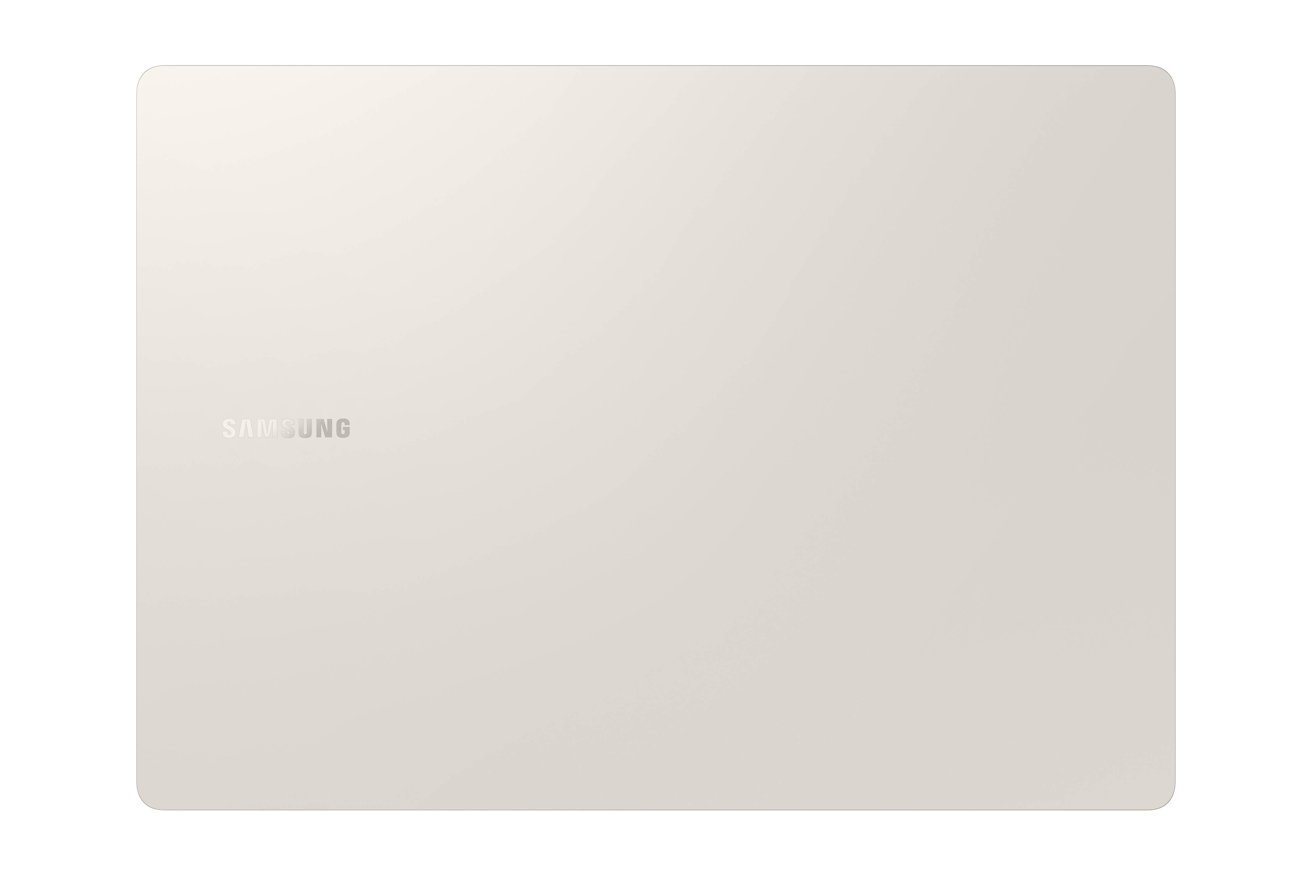
While the Galaxy Book3 Pro has a lot of configuration options, there are actually very limited options for preorders in the United States at launch. In other regions, such as the UK, there are other options available.
The pre-order package includes the Core-i7 chip and 16GB of memory, as well as 512GB of storage for $1,149.99. As part of the preorder, Samsung is offering direct buyers a free upgrade to the 1TB capacity.
Cheap, but lagging behind
Both Samsung and Apple are best known for their flagship mobile devices, with each offering massive specifications in their premium offerings. When it comes down to similar products under their notebook lines, it's far less of a competition.
Samsung has created a notebook that you could argue is its equivalent of the older MacBook Air. Thin, light, and enough to do the tasks you want to be done.
With this being the Galaxy Book3 Pro, that indicates Samsung thinks it can go after Apple in both appearance and performance.
We cannot fault Samsung on appearance here too much, as it's created something that is quite similar to Apple's well-defined notebook aesthetic. One that's also lighter and thinner than its rival.
We can, however, complain about its performance being not up to the same standard.
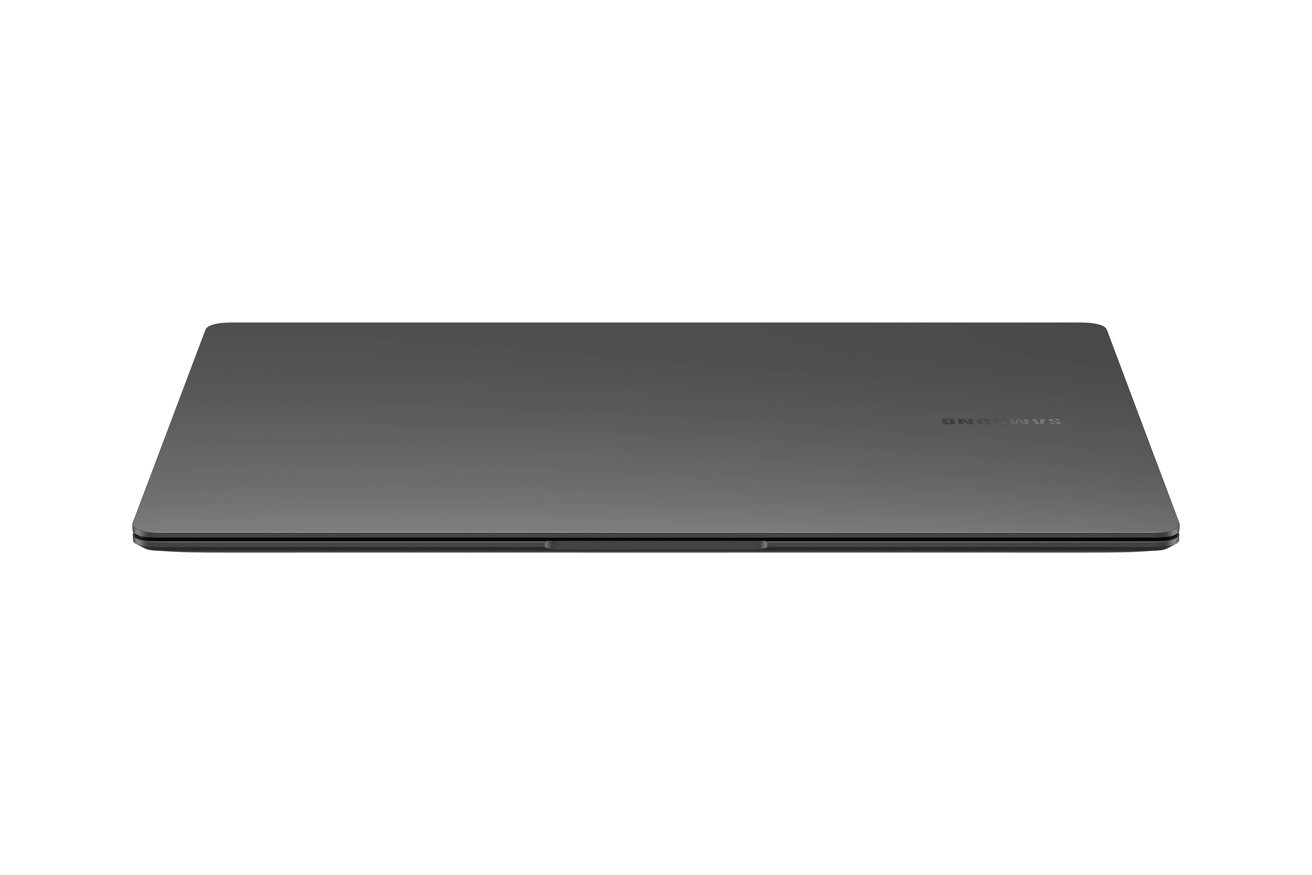
Where Samsung can be commended is in creating a Windows notebook that echoes the MacBook Air in styling and ethos, while also being quite good value for consumers.
However, it's nowhere near where Apple is with its M2 Pro and Max chips, and certainly isn't close to beating the 14-inch MacBook Pro on anything but price.
Where to buy a Galaxy Book Pro vs MacBook Pro
Both models in the Galaxy Book Pro vs MacBook Pro showdown are discounted. Apple's MacBook Pro 14-inch is eligible for exclusive savings on every model with promo code APINSIDER at Apple Authorized Reseller Adorama.
Compare discounts across Apple resellers to locate the cheapest MacBook Pro 14 price on the model of your choosing, with prices dipping to as low as $1,849 at press time.
Samsung's Galaxy Book3 Pro, meanwhile, can be ordered from Samsung directly, with a free storage upgrade promotion in place for a limited time.
Exclusive Deals Through AppleInsider
Exclusive Deals Through AppleInsider

14-inch MacBook Pro (2023)
Save on every configuration with exclusive coupon savings.
Buy from $1,849

Samsung Galaxy Book 3 Pro
Get a free storage upgrade on the Galaxy Book 3 Pro for a limited time.
Buy from $1,149.99